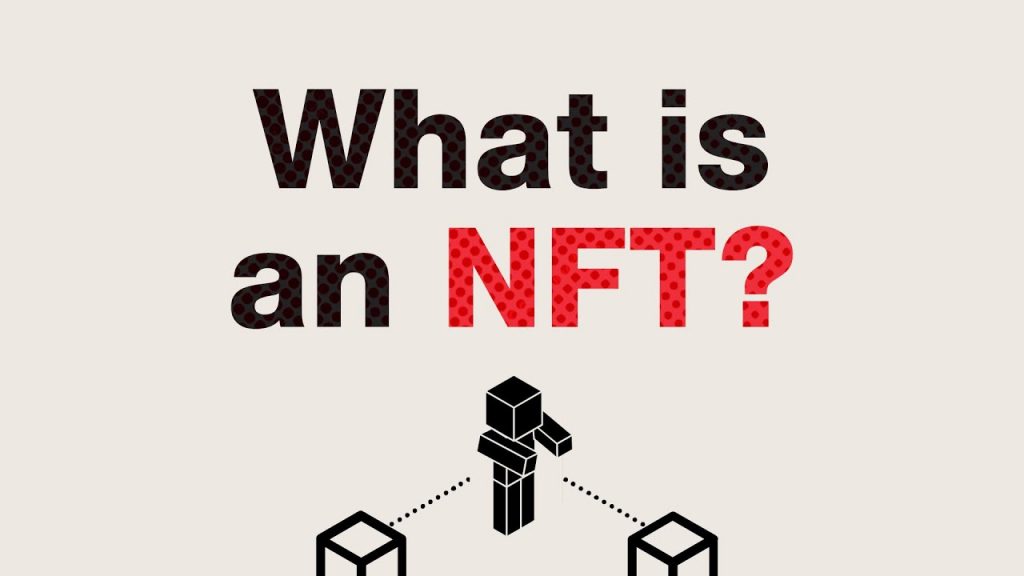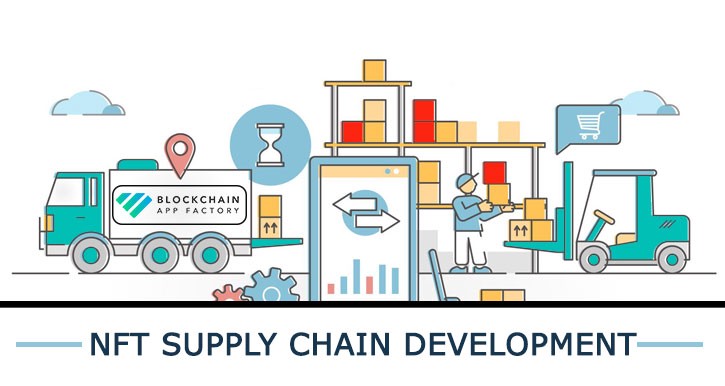What Is An NFT? A Guide To Non-Fungible Tokens

What is an NFT?

NFTs have generated a lot of attention recently and become popular in the arts and entertainment worlds. Yet, beyond these early applications, many real-world business use cases from licensing and certifications to real estate to supply chain management and logistics are still at an early stage in the NFT revolution.
With the current trend of blockchain and cryptocurrency hitting the mainstream, NFTs have taken the spot light and many people are actually wondering what NFTs actually are. The word “NFT” stands for “non-fungible token”, a non-fungible token (NFT) is a unique identifier that can cryptographically assign and prove ownership of digital or physical goods. In simple terms, an NFT is a digital asset that links ownership to unique physical or digital items, such as artwork, music, in game items, real estate, and even music and videos. NFTs can also be used to give an NFT owner access to exclusive merchandise, event tickets to live or digital events, or be linked to actual physical assets like , handbags, cars, boats, and so much more.
So what the difference been fungible and non-fungible items?

Fungible items are exactly the same and that can be exchanged with one another with ease because their value isn’t tied to their uniqueness. For example, you can exchange a $1 note for another $1 note, and you’ll still have $1 even though your new note has a different serial number.
Non-fungible items aren’t interchangeable as they are unique. With NFTs, each item has unique properties and isn’t worth the same amount as other similar items. This is because Non-fungible tokens (NFTs) are cryptographic assets on a blockchain with unique identification codes and metadata that distinguish them from each other. Unlike typical cryptocurrencies, they cannot be traded or exchanged at equivalency. This differs from fungible tokens like cryptocurrencies, which are pretty much identical to each other and, therefore, can serve as a medium for commercial transactions.
How Does an NFT work?

NFTs are created on blockchain technology, and each NFT has the potential to work as several different applications due to its distinctive construction. A digital asset management platform or marketplace is an ideal platform for digitally representing NFTs as physical or digital assets, such as real estate and artwork.
NFTs can remove intermediaries, make transactions more efficient, and create new markets. For example like connecting artists directly to their audiences. Additionally, NFTs can also be used for digital content, gaming items, investment collateral, and domain names. Many crypto-trading enthusiasts and art collectors are NFTs buyers and sellers. We will further expand on actual use cases in detail below.
NFT use cases
1. Artwork, luxury brands, sports and other memorabilia

Applications for NFTs have taken off recently are primarily in the collectibles, art, gaming and virtual worlds. Early use cases include Cryptopunks, which are 24×24 pixel art images that were algorithmically generated, and Cryptokitties, a virtual game. Other known examples include:
- An NFT collage by digital artist Beeple that sold for $69 million in March 2021.
- A digital image of a New York Times column, which sold at a charity auction for $560,000 in crypto.
- The first ever tweet by Twitter, sold to a Malaysian nft collector.
Now sports tickets and other collectibles are also being tokenised. Examples of sports NFT digital collectibles include “Moments,” sold on the NBA Top Shot platform. Moments might include a video clip of the player making a move or the NBA’s Top Shot, a blockchain-based trading card system that offers game highlights as NFTs.
Crypto-artwork and other entertainment applications derive most of their value from the ability to provide digital verification of their authenticity, uniqueness and ownership. In markets that are plagued by counterfeiting and fraud, for example: art, luxury brands or other collectibles; NFTs can provide real authentication.
NFTs for art and other applications cannot be altered or copied, which is very important in preventing plagiarism and creative theft, it also helps artists monetise their own assets. Additionally, NFTs give digital art the qualities of being unique, original and rare. They can also be tracked from the origin of an artist or seller. Also, they enable anyone to see the transacted price and how many times the artwork has been bought and sold.
The prevention of fraud and creative plagiarism are also crucial in the media and film industries, which are still-emerging markets for NFT utility. Files can also be appended to the blockchain as an NFT to prevent them from being copied or shared without the actual owners’ permission.
2. Identification, certification and documentation

Personal identity management is one key area in which NFTs can shine, however it is still early days for this type of application. Because NFTs contain code with a unique set of information, they can be used to tokenise documentation such as IDs, degrees, academic certificates, licenses and other qualifications as well as medical records, birth and death certificates. The person’s identity or certification can also be issued directly over the blockchain as an NFT, and this can be traced back to the owner. So there is much potential, for employing NFTs to digitally store and protect things like: medical history, personal profiles, education and address details etc. It gives users better control of their identification data and can help prevent identity theft.
A similar concept could be applied to identification documents like: driver’s licenses or passports in the future. While NFTs could help eliminate driver’s license, visa and passport forgeries, details about how this technology can be used, have yet to be worked out in detail. Another application is the use of NFTs for vaccine certifications. The Republic of San Marino actually announced its adoption of NFT COVID-19 vaccination passports.
3. Real estate

NFTs actually have applications for selling real estate in both the virtual and physical worlds. In the virtual world, digital real estate applications are gaining ground in games such as the Sandbox. Participants purchase areas in a virtual world and build on their virtual land. Using NFT ensures that the objects’ original producers can be identified as owners in the platform.
Virtual real estate land NFTs are exchangeable on NFT marketplaces like Opensea through transactions that are more efficient and transparent than real-world real estate transactions. Ownership of virtual real estate is recorded on a decentralised ledger through an NFT, rather than using a traditional government deed or title. Holders are the perpetual owners of their digital items until they sell it.
While there are already several metaverse of virtual real estate sales, real-world real estate applications of NFT are in their absolute infancy. In the future, using NFTs and blockchain in the physical world could be an efficient way to manage titles and verify property ownership history.
4. Supply chain and logistics

The main function of NFTs in the supply chain industry lies in authenticating products and stock, by ensuring their quality, authenticity and verifying their origin. Although still in the early stages, NFTs on blockchain are highly suitable for logistics applications because of their immutability and transparency, which keeps supply-chain data authentic and reliable. In the food & beverage and other perishable industries, knowing where the goods have been and for how much time it has left to expire is crucial.
NFTs can eliminate stock counterfeiting, and help trace the movement of goods along the supply chain and assure uniqueness. This would be especially applicable to supply chains for luxury fashion brands. For businesses like the automotive industry, NFTs can also provide information regarding each material and component in a particular product, and this could help with cost control. NFTs would also be very useful for industries looking to track the use of recyclable items and sustainable materials.
5. Domain name ownership

The Internet Corporation for Assigned Names and Numbers (ICANN) controls the standard domain name service (DNS) and there is limited oversight of these domains. This raises concerns about censorship and security. You also don’t own your domain name and are merely just renting it and paying an annual fee to keep it.
With a blockchain domain system, owners can control their domains using their own private keys. Blockchain domain names are recorded permanently in a public registry and cannot be deleted or altered by a third party, helping to eliminate concerns of losing your domain names.
Blockchain domain NFTs also enable easy trading as well as customisable domain names. The Ethereum Name Service (ENS) and Unstoppable Domains, are decentralised alternatives to the standard DNS, providing crypto-addresses that are similar to an Instagram or Twitter handle, but each domain name must be unique. Although Instagram and Twitter users are not allowed to sell their usernames, ENS and Unstoppable Domains let users buy and sell domain name crypto-addresses.
Why NFTs Are Important

Non-fungible tokens are an evolution of the relatively simple concept of cryptocurrencies and actual business operation. Modern finance systems consist of sophisticated systems for different asset types, ranging from real estate to supplier contracts to artwork. By enabling digital representations of physical or digital assets, NFTs are a step forward in the reinvention of this infrastructure in WEB3.
Non-fungible tokens can greatly improve identity management. Consider the case of physical passports or IDs that need to be produced at every entry and exit point. By converting individual them into digital NFTs, each with its own unique identifying characteristics, it is possible to streamline the entry and exit processes for jurisdictions. Expanding this use case, NFTs can serve an identity management purpose for multiple use cases within the digital & WEB3 realm as well.



